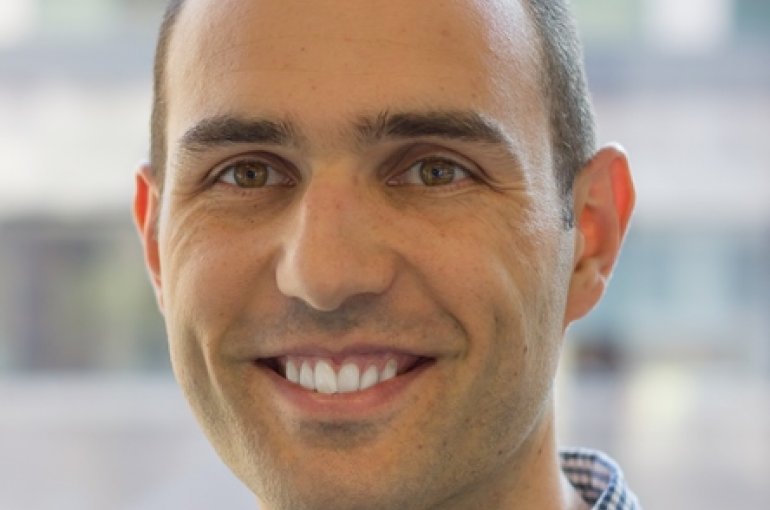Vidi grant for Enrico Pajer
The ‘molten chocolate’ model of the universe

A Vidi grant was awarded to Enrico Pajer, theoretical cosmologist at Utrecht University and staff member of the Delta Institute for Theoretical Physics, by the The Netherlands Organisation for Scientific Research (NWO). With the grant, Pajer will further develop an effective field theory for the universe. In this model, the ingredients of the universe – matter, dark matter and dark energy – can be described as/behave like a fluid, with the same viscosity as molten chocolate.
The distribution of matter in space, also known as the large scale structure, follows patterns that were set up during the first fraction of a second after the Big Bang. How exactly this happened is still unknown and subject of very active research. A recent and very promising approach to describe the evolution of the large scale structure is by modelling the contents of the universe as a fluid. This approach is based on effective field theory (EFT), a theoretical framework that has been around in particle physics and condensed matter physics for decades, but has hardly been exploited in cosmology.
Same viscosity as molten chocolate
Just as a fluid, the universe is smooth on large scales but chunky on smaller scales. To describe the flow of water in a river, it is not necessary – nor possible - to calculate the movements of every single water molecule. In the same way, the evolution of the large scale structures in the universe can be described in terms of a fluid, swirling through space. Previous calculations showed that this cosmological fluid has the same viscosity as molten chocolate: a sluggish liquid in which sound waves dampen very fast.
Rewinding the cosmic evolution back
Enrico Pajer aims to rewind the cosmic evolution back to its beginning by tracking the fluid-like flow of the cosmos back 13.8 billion years. “It opens a new way to study inflation, the exponential expansion of the universe shortly after the Big Bang,” Pajer says. The fluid model makes predictions that can be tested with existing data on the large scale structure such as the Sloan Digital Sky Survey (SDSS) and upcoming data from current telescope missions (HETDEX, KiDS). The predictions will also be used to help design and optimize the next generation of experiments, including the European Euclid space mission (2020) and the Large Synoptic Survey Telescope project (Chile, 2020)
Big open questions
The final goal is to provide answers to the big open questions in modern cosmology, such as: What is the nature of dark energy? How does it evolve in time? What is dark matter made of? And what is the exact mechanism of inflation, the extreme growth spurt that occurred just fractions of a second after the Big Bang? Pajer: "During the next decade, a huge amount of information about the large scale structure will become available. This new fluid model might be crucial to interpret these data and answer some of the deepest questions we have about our universe."
About the NWO Vidi grants
The Vidi grant is aimed at outstanding researchers who, after obtaining their doctorates, have conducted successful research for several years. The scientists are among the best ten to twenty per cent in their field of study. A Vidi grant will enable them to conduct research for five years. The Vidi grant is part of the NWO's Innovational Impulse programme which consists of the Veni, Vidi and Vici grants.
Further reading:
- Quanta Magazine: Big Bang Secrets Swirling in a Fluid Universe, 12 Feb 2014
- Sloan Digital Sky Survey (SDSS)
- Hobby-Eberly Telescope Dark Energy eXperiment (HETDEX)
- Large Synoptic Survey Telescope (Chile, 2020)
- Euclid (2020)
Scientific references:
[arXiv:1004.2488] Cosmological Non-Linearities as an Effective Fluid - Daniel Baumann, Alberto Nicolis, Leonardo Senatore, Matias Zaldarriaga (April 2010), JCAP 1207 (2012) 051
[arXiv:1206.2926v2] The Effective Field Theory of Cosmological Large Scale Structures - John Joseph M. Carrasco, Mark P. Hertzberg, Leonardo Senatore (June 2012)
[arXiv:1301.7182] On the Renormalization of the Effective Field Theory of Large Scale Structures - Enrico Pajer, Matias Zaldarriaga (Jan 2013), JCAP 1308 (2013) 037
[arXiv:1406.4135] The Bispectrum in the Effective Field Theory of Large Scale Structure - Tobias Baldauf, Lorenzo Mercolli, Mehrdad Mirbabayi, Enrico Pajer (June 2014)

